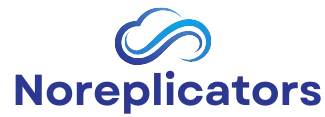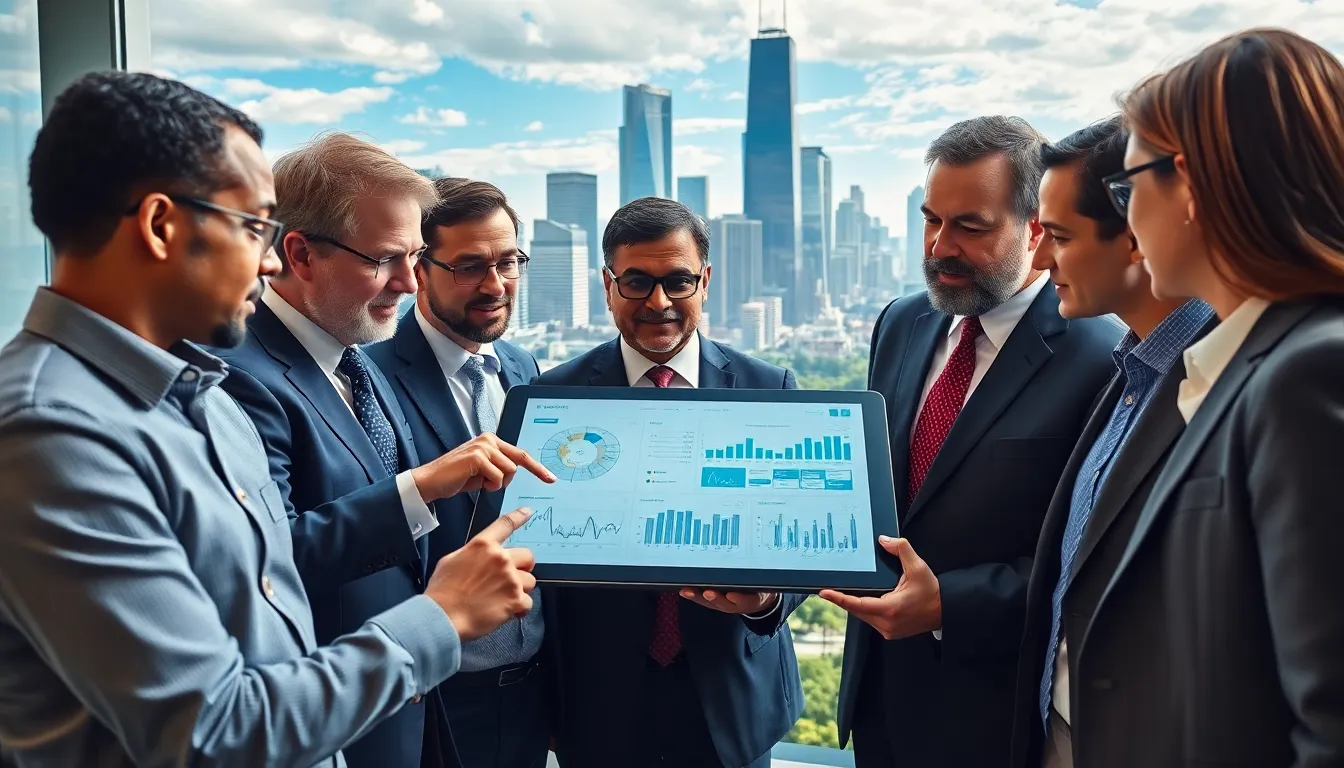In a world where cities are growing faster than you can say “urban sprawl,” GovTech is stepping in like a superhero in a spandex suit. It’s not just about fancy apps and data crunching; it’s about transforming how cities plan, build, and thrive. Imagine a future where traffic jams are a thing of the past, and city services run smoother than your favorite coffee shop’s espresso machine.
Table of Contents
ToggleOverview of GovTech
GovTech represents a vital intersection between technology and government, aimed at enhancing public services. It involves utilizing innovative solutions to address urban challenges effectively, transforming the way cities function.
Definition and Scope
GovTech refers to technology-driven solutions that enhance government operations. This includes software applications, data analytics tools, and digital platforms that facilitate interaction between citizens and government entities. The scope of GovTech extends beyond technology to encompass innovative policies and practices that improve service delivery. Urban planners leverage GovTech to analyze spatial data, streamline processes, and implement smart city initiatives. These tools ensure that urban development becomes more sustainable, transparent, and responsive.
Importance in Urban Planning
GovTech plays a crucial role in shaping modern urban planning efforts. By harnessing data from various sources, cities can identify patterns in growth and infrastructure needs. Traffic management systems help reduce congestion and improve mobility. Enhanced citizen engagement platforms foster collaboration between local governments and residents, ensuring that community needs shape urban policies. As cities face increasing demands, GovTech solutions facilitate informed decision-making and resource allocation, transforming how municipalities plan for the future.
Key Technologies in GovTech

GovTech encompasses various technologies that significantly enhance urban planning and management. These key technologies streamline processes and promote effective communication between citizens and government agencies.
Data Analytics
Data analytics plays a pivotal role in GovTech by transforming raw data into actionable insights. Urban planners leverage analytics to identify trends, optimize resource allocation, and enhance service delivery. For instance, extensive datasets can reveal traffic patterns that inform transportation planning. Real-time data helps cities respond swiftly to events, improving public safety and emergency responses. By integrating data analytics into decision-making, municipalities foster a more efficient and responsive governance model.
Geographic Information Systems (GIS)
Geographic Information Systems (GIS) serve as essential tools in urban planning within GovTech. GIS technology allows planners to visualize spatial data, facilitating a deeper understanding of city dynamics. Various urban elements, such as land use and infrastructure, can be mapped for better analysis. Planners utilize GIS to assess environmental impacts and forecast urban growth accurately. Enhanced mapping capabilities support effective collaboration among stakeholders, including residents, helping to create more sustainable urban environments.
Benefits of Implementing GovTech
Implementing GovTech in urban planning provides numerous advantages, particularly in enhancing decision-making and fostering community engagement. These benefits lead to improved urban environments and more efficient governmental operations.
Enhanced Decision-Making
Data analytics and Geographic Information Systems (GIS) support informed decision-making in urban planning. Effective insights emerge from raw data, allowing planners to detect growth trends and identify infrastructure needs. Continuous updates in real time enable responsive adjustments. Analytics tools identify when and where services require enhancement. Planners utilize these technologies to streamline resource allocation and optimize service delivery efficiently. Organizations also benefit by anticipating future challenges, which leads to proactive solutions rather than reactive measures.
Community Engagement
GovTech solutions improve community engagement by facilitating direct communication between citizens and local governments. Interactive platforms encourage feedback and participation, helping officials to understand residents’ needs better. Active engagement fosters a sense of ownership among residents, leading to a more collaborative approach to urban development. Additionally, public consultation tools enhance transparency, allowing communities to contribute to significant decisions. Innovative apps and platforms simplify access to information about city projects and initiatives, ensuring inclusivity in urban planning processes.
Challenges and Considerations
Urban planners face several challenges when integrating GovTech into their processes. Addressing privacy and security concerns is paramount. Effective data collection and analysis require access to sensitive information, making it essential to implement robust security measures. Citizens often hesitate to share personal data, fearing misuse. Governments must establish transparent data handling practices to build trust and encourage community participation.
Funding and resource allocation also present significant hurdles. Striking a balance between technological innovation and budget constraints is crucial. Urban planning departments often compete for limited financial resources, making it difficult to prioritize GovTech initiatives. Moreover, integrating new technologies with existing systems can incur substantial costs. Securing investment from public and private stakeholders is vital for successful implementation. Effective resource management enables urban planners to utilize GovTech tools efficiently, maximizing their impact on urban development.
Case Studies of Successful Implementation
Numerous cities globally demonstrate effective GovTech integration in urban planning. These case studies highlight innovative solutions transforming urban landscapes.
Notable Examples
Barcelona stands out with its Smart City initiative, utilizing IoT sensors to monitor air quality and traffic flow. Singapore implements real-time data analytics in its Land Use Plan, enhancing land management and sustainability. Boston employs an open data platform, making city data accessible to citizens, fostering transparency and involvement in governance. These examples showcase how diverse strategies across different cities enhance urban efficiency and community engagement.
Lessons Learned
Cities often face challenges when adopting GovTech tools. Successful implementation requires collaboration between government agencies and technology providers, ensuring systems align with urban needs. Effective communication with citizens strengthens trust, facilitating smoother data sharing and usage. Financial investments play a significant role, as sustained funding enables continuous development and adaptation of GovTech solutions. Overall, leveraging real-time data significantly improves decision-making and resource management in urban planning.
Future Trends in GovTech for Urban Planning
Anticipating future trends in GovTech reveals exciting innovations that will reshape urban landscapes. These emerging technologies and practices promise to address the growing complexities of urban living.
Innovations on the Horizon
Blockchain technology stands out as a transformative tool for urban planning. Its ability to secure data exchanges enhances transparency in property transactions and public records. Additionally, sensor technology continues to evolve, allowing cities to gather real-time environmental data. This data drives sustainable practices and urban resilience. Drone technology offers aerial perspectives for better land use planning, giving planners insights into complex urban environments. Finally, 5G connectivity facilitates faster data transmission, promoting enhanced collaboration between city planners and citizens.
The Role of Artificial Intelligence
Artificial Intelligence (AI) will revolutionize urban planning through predictive analytics and machine learning. Planners can streamline traffic patterns and resource distribution using AI insights, substantially improving urban mobility. AI-powered chatbots enhance citizen engagement by providing instant responses to inquiries, fostering a deeper connection between residents and local governments. Smart infrastructure that adapts to changing urban conditions is also driven by AI, ensuring more efficient energy use and resource management. Continuous learning from AI applications equips urban planners with data-driven strategies, ultimately enhancing decision-making processes.
GovTech is fundamentally transforming urban planning by integrating innovative technologies and fostering deeper connections between citizens and local governments. As cities grapple with rapid growth and complex challenges, these solutions provide the tools necessary for informed decision-making and efficient resource management.
The successful implementation of GovTech in various cities demonstrates its potential to enhance urban living through improved services and community engagement. By prioritizing transparency and collaboration, municipalities can build trust and encourage active participation from residents.
Looking forward, the continued evolution of GovTech will pave the way for smarter, more sustainable cities that can adapt to the dynamic needs of their populations. Embracing these advancements is essential for urban planners aiming to create resilient urban environments for future generations.




